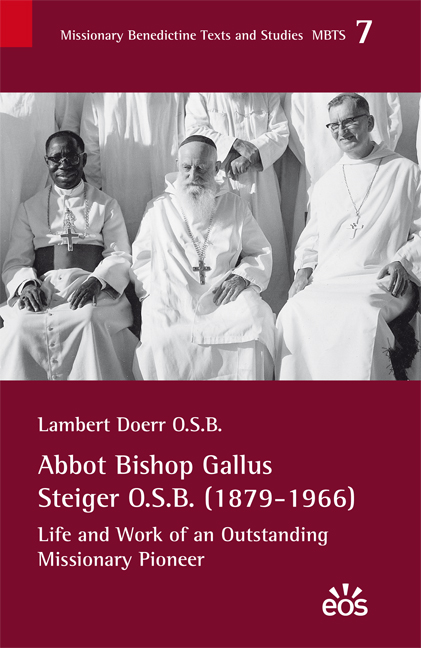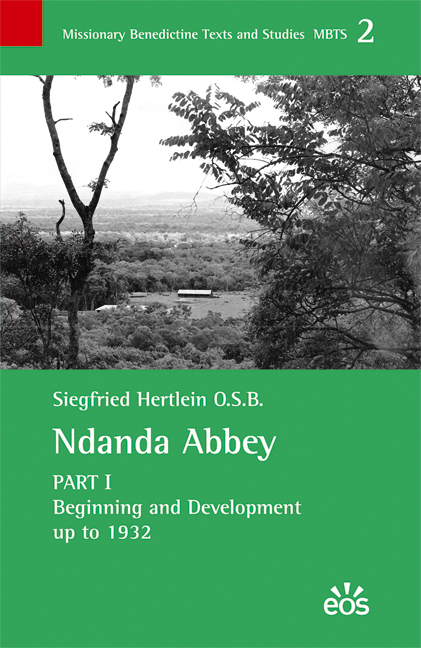Missionary Benedictine Texts and Studies
The series was founded in 2008 for the research and documentation on the history of the Missionary Benedictines of St. Ottilien and Tutzing. It is directed by Joel Macul, O.S.B. (Newton/Schuyler) and Cyrill Schaefer, O.S.B. (St. Ottilien).
07
Doerr, LambertAbbot Bishop Gallus Steiger O.S.B. (1879-1966)
06
Dondorfer O.S.B. (ed.), WitgarOur Destiny in Korea
German Benedictine Missionaries Tell Their Story 1941-1954
 Cover-Download | The return of 42 Missionary Benedictine monks and sisters to Germany who were missing for years in Communist North Korea became a media sensation in 1954. Their stories about the last years of the missionary Abbey of Tokwon, their dealings with Japanese, Russian and North Korean occupation forces and the time of imprisonment in the Communist labor camp of Oksadok provide a fascinating image of Christian courage in times of distress.  |
05
Hertlein, SiegfriedNdanda Abbey, Part IV
The Abbey’s Life with the African Diocese 1973 – 2001
 Cover-Download | In 1963, the Territorial Abbey of Ndanda handed over their former mission territory to the newly erected Mtwara diocese. The agreement between the missionary Benedictines and leadership of the diocese stated that “the missionary priests of the Congregation of St. Ottilien are prepared to co-operate with the African clergy in the ordinary and extraordinary pastoration under the authority of the Bishop. The Missionary brothers will also continue their services for the Diocese.” This forth volume of Ndanda’s widespread history describes the transition period which started under the Abbot Bishop Victor Haelg and continued under Abbot Siegfried Hertlein.  |







